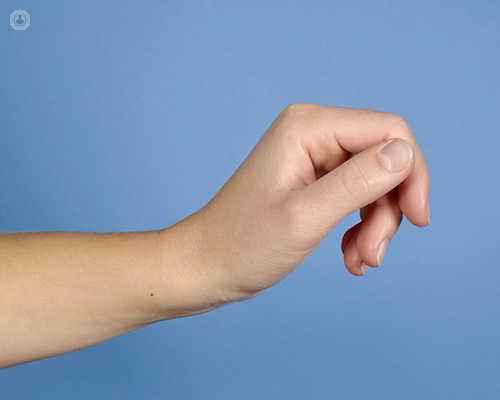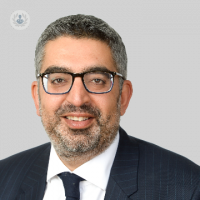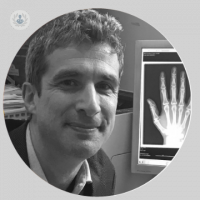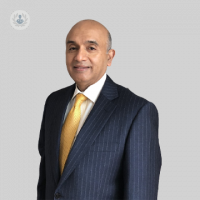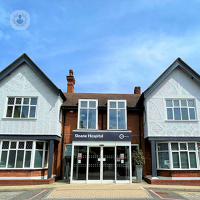What is carpal tunnel surgery?
Carpal tunnel syndrome is a condition which causes numbness, tingling, or pain in the hand. It is a common condition which occurs due to compression of the median nerve in the wrist, which runs down the carpal tunnel, a narrow passage on the side of the wrist. The nerve controls movement in the thumb, and fingers, except the little finger. Carpal tunnel surgery is indicated in some cases to correct long-lasting cases of carpal tunnel syndrome.
Why is carpal tunnel surgery performed?
Carpal tunnel syndrome often clears up by itself or with therapy, but in some cases symptoms can go on for a long time, and the condition may get worse. Muscles in the hand and wrist can weaken, and everyday movements such as grasping or gripping may become more difficult to perform. Surgery is indicated in cases of long-lasting carpal tunnel syndrome, when other treatment methods have been explored and been unsuccessful.
What does it involve?
Carpal tunnel surgery is usually performed either as open or endoscopic surgery. In open surgery, a larger cut is made, and recovery time is generally longer. In endoscopic surgery, smaller cuts are made and a tiny camera is inserted which helps guide the surgeon as they cut inside the joint and ligament. However, in both cases the ligament around the carpal tunnel is cut, which relieves pressure around the median nerve. After surgery the ligament is brought back together, but the median nerve has more space to pass through, which permanently relieves the compression.
How to prepare for it
Before surgery, the orthopaedic surgeon will explain exactly what type of procedure they will be performing, and what to expect. Before surgery, medication will be discussed and blood thinning medications must be avoided, as they can increase bleeding during surgery.
The patient should arrange for someone to escort them from the hospital, as they will not be able to drive after the surgery has been performed.
Post-operative care
After the operation, the wrist and surrounding area will be sore and painful, with some swelling and stiffness. A bandage is put in place and this will be kept on for 1-2 weeks. Some over-the-counter medications may help with pain relief. During the recovery period, exercises can be done which will be advised by the surgeon. This helps to prevent the fingers from getting stiff, but it is important to avoid straining them.
In the period directly after surgery (2 weeks afterwards), care should be taken, making sure to only perform light tasks and light movements. Return to normal movement can be made slowly, over a period of time. It usually takes around 10-12 weeks for strength to fully return.
11-13-2012 07-04-2024Carpal tunnel surgery
Mr Andrew Fitzgerald - Orthopaedic surgery
Created on: 11-13-2012
Updated on: 07-04-2024
Edited by: Aoife Maguire
What is carpal tunnel surgery?
Carpal tunnel syndrome is a condition which causes numbness, tingling, or pain in the hand. It is a common condition which occurs due to compression of the median nerve in the wrist, which runs down the carpal tunnel, a narrow passage on the side of the wrist. The nerve controls movement in the thumb, and fingers, except the little finger. Carpal tunnel surgery is indicated in some cases to correct long-lasting cases of carpal tunnel syndrome.
Why is carpal tunnel surgery performed?
Carpal tunnel syndrome often clears up by itself or with therapy, but in some cases symptoms can go on for a long time, and the condition may get worse. Muscles in the hand and wrist can weaken, and everyday movements such as grasping or gripping may become more difficult to perform. Surgery is indicated in cases of long-lasting carpal tunnel syndrome, when other treatment methods have been explored and been unsuccessful.
What does it involve?
Carpal tunnel surgery is usually performed either as open or endoscopic surgery. In open surgery, a larger cut is made, and recovery time is generally longer. In endoscopic surgery, smaller cuts are made and a tiny camera is inserted which helps guide the surgeon as they cut inside the joint and ligament. However, in both cases the ligament around the carpal tunnel is cut, which relieves pressure around the median nerve. After surgery the ligament is brought back together, but the median nerve has more space to pass through, which permanently relieves the compression.
How to prepare for it
Before surgery, the orthopaedic surgeon will explain exactly what type of procedure they will be performing, and what to expect. Before surgery, medication will be discussed and blood thinning medications must be avoided, as they can increase bleeding during surgery.
The patient should arrange for someone to escort them from the hospital, as they will not be able to drive after the surgery has been performed.
Post-operative care
After the operation, the wrist and surrounding area will be sore and painful, with some swelling and stiffness. A bandage is put in place and this will be kept on for 1-2 weeks. Some over-the-counter medications may help with pain relief. During the recovery period, exercises can be done which will be advised by the surgeon. This helps to prevent the fingers from getting stiff, but it is important to avoid straining them.
In the period directly after surgery (2 weeks afterwards), care should be taken, making sure to only perform light tasks and light movements. Return to normal movement can be made slowly, over a period of time. It usually takes around 10-12 weeks for strength to fully return.


Carpal tunnel syndrome FAQs answered by a specialist
By Mr Andrew Logan
2024-11-21
Carpal tunnel syndrome involves a sensation of pins and needles and numbness in the affected hand and wrist. If you think you have carpal tunnel syndrome or have been diagnosed with it, you'll likely have some questions. Mr Andrew Logan, an orthopaedic surgeon and hand and wrist specialist, provides you with answers to frequently asked questions. See more


Why do my hands hurt at night? What to know about Carpal Tunnel Syndrome
By Mr James Nicholl
2024-11-21
Have you ever woken up in the middle of the night with a feeling of pins and needles in the fingers? It could be a case of trapped nerves, known as carpal tunnel syndrome. Hand and wrist surgeon Mr James Nicholls explains what it feels like and whether it can go away by itself without treatment. See more


What happens if carpal tunnel syndrome isn’t treated?
By Miss Tanaya Sarkhel
2024-11-21
Carpal tunnel syndrome (CTS) is a common condition that requires treatment to maintain different functions of the hand and fingers. Read on to find out exactly why treatment for CTS is so important, as explained by Miss Tanaya Sarkhel. See more


Hand surgery: The last resort in a series of treatments
By Mr Andreas Baumann
2024-11-21
The general term for various surgical procedures which aim to reduce pain and restore function in the hand, wrist or forearm is hand surgery. Highly-regarded consultant hand and shoulder surgeon Mr Andreas Baumann offers an expert insight into the area. He explains exactly what hand surgery involves, the potential complications and what recovery is like following surgery, among other important points. See more
Experts in Carpal tunnel surgery
-
Mr Kunal Hinduja
Orthopaedic surgeryExpert in:
- Hand surgery
- Dupuytren’s contracture
- Hand injury
- Carpal tunnel surgery
- Trigger finger
- Ganglion cyst
-
Mr Andrew Fitzgerald
Orthopaedic surgeryExpert in:
- Spinal surgery
- Hand surgery
- Wrist surgery
- Elbow
- Carpal tunnel surgery
- Hand arthritis
-
Mr G Shyamalan (Shyam)
Orthopaedic surgeryExpert in:
- Carpal tunnel surgery
- Dupuytren’s contracture
- Trigger finger
- Hand surgery
- Ganglion cyst
- Epicondylitis (tennis elbow)
-
Mr Miguel Oliveira
Orthopaedic surgeryExpert in:
- Trapeziectomy
- Carpal tunnel surgery
- Hand arthritis
- Trigger finger
- Joint injections
- Dupuytren’s contracture
-
Mr Dipen Menon
Orthopaedic surgeryExpert in:
- Hip replacement
- Knee replacement
- Knee arthroscopy
- Anterior cruciate ligament
- Foot and ankle
- Carpal tunnel surgery
- See all

The Sloane Hospital - part of Circle Health Group
The Sloane Hospital - part of Circle Health Group
125 Albemarle Rd, Beckenham BR3 5HS
No existe teléfono en el centro.
By using the telephone number provided by TOP DOCTORS, you automatically agree to let us use your phone number for statistical and commercial purposes. For further information, read our Privacy Policy
Top Doctors

Cleveland Clinic London Hand Unit
Cleveland Clinic London Hand Unit
33 Grosvenor Place
No existe teléfono en el centro.
By using the telephone number provided by TOP DOCTORS, you automatically agree to let us use your phone number for statistical and commercial purposes. For further information, read our Privacy Policy
Top Doctors

The Highfield Hospital - part of Circle Health Group
The Highfield Hospital - part of Circle Health Group
Manchester Road, Rochdale, Lancashire, OL11 4LZ
No existe teléfono en el centro.
By using the telephone number provided by TOP DOCTORS, you automatically agree to let us use your phone number for statistical and commercial purposes. For further information, read our Privacy Policy
Top Doctors
-
The Sloane Hospital - part of Circle Health Group
125 Albemarle Rd, Beckenham BR3 5HS , South LondonExpert in:
- Abdominal ultrasound
- Vascular Surgery
- Cardiology
- Colorectal surgery
- Endocrine Surgery
- General Surgery
-
Cleveland Clinic London Hand Unit
33 Grosvenor Place, Central LondonExpert in:
- Arthritis
- Hand surgery
- Diagnostic Imaging
- Musculoskeletal imaging
- Hand and wrist
- Joint replacement
-
The Highfield Hospital - part of Circle Health Group
Manchester Road, Rochdale, Lancashire, OL11 4LZ , RochdaleExpert in:
- Cardiology
- Orthopaedic surgery
- Plastic surgery, reconstructive and aesthetics
- Dermatology
- Diagnostic Imaging
- Endocrinology
- See all
- Most viewed diseases, medical tests, and treatments
- Joint pain
- Lumbar herniated disc
- Spinal surgery
- Minimal access surgery (keyhole surgery)
- Shoulder pain
- Parkinson's disease
- Osteoporosis
- Botulinum toxin (Botox™)
- Abnormal gait
- Shoulder osteoarthritis
